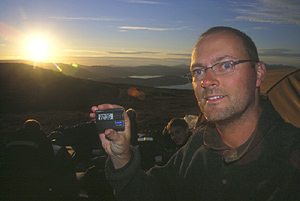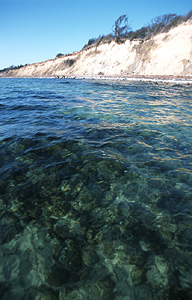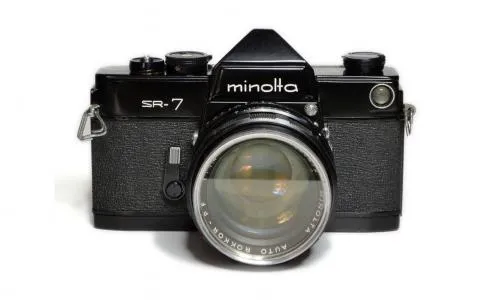The camera love of my life!
This camera was the best gadget experience I have had in my photo career. It was (and is) a great SLR with some really fantastic facilities and one of the all time great "user experiences" in cameras.
My Dynax 7 just sticks in my hands like a part of the body. It has the perfect shape for my fingers and mounted with the vertical grip, which I have had from day one, it feels equally well in portrait mode as it does in landscape. All buttons are well placed and apart from a few small flaws it is very close to being perfect.
The large display on the backside was a first in SLR cameras and a thing that I really learned to appreciate. Minolta managed to transfer the use of that display to the 7D and make it even better. My recently acquired Nikon D200 has an equally large display on the back, as do most modern digital SLR's, but doesn't nearly use it as well as Minolta has done since the Dynax/Maxxum 7. The readout of exposure data and settings of the camera is a strike of brillance, which no one has surpassed in camera design and usability.

[Dynax 7, Vivitar 19-35mm f3.5-4.5, Provia 100]
Control heaven
The Dynax/Maxxum 7 is a photographer's dream come true when it comes to controls. First of all it was a return to the classical dials for controlling most aspects of the camera, and the change from Minolta's attraction to pushbuttons and strange sliders to regular, mechanical contacts and dials was a very welcome change for me.
The latter gives a positive sense of the changes you make, and a fast, visual confirmation that the settings are as you expect (or not expect). Small recessed buttons and obscure indicators in fuzzy LCD-panels will not give nearly the same sense of intuitively being in control. Learning to master the fairly simple controls is an easy task, but they still let you make complex settings by combining them.
As a supplement to the straightforward external controls, the Dynax 7 was also a heaven of intricate settings done through a menu on the rear LCD-display -- a first as far as I know. These settings covered detailed metering control, configuring the external dials and much, much more, which we now have become accustomed to see in any DSLR, but which was unseen back in the late 90's when the 7 was sent on the market.
As seen on the big screen
The large bitmapped LCD-screen on the backside of the camera provides a lot of very advanced and useful information. A couple of examples:
Full exposure information as well as the basic settings and compensations. This is just great and a thing I fail to see why no other manufacturers have copied in their SLR's. Even small P&S cameras have such readouts overlaid over the preview image these days. All DSLR's ought to have the same. And like on the Minolta they should shift from horizontal to vertical when you turn the camera!
A brightness map that shows the readout of the honeycomb light meter cells, enabling you to assess the distribution of light in a scene. Excellent for judging contrast, finding burned out areas and a forerunner of the histogram that we see on any digital camera today.
A depth-of-field readout that enables you to see in plain numbers the area of sharpness with certain lenses. I have to remark that even though this is a neat feature, I have never used it for anything else than showing off the facilities of the camera. For me as a photographer the depth-of-field (DOF) preview button is a much better tool.
Links
Photo.net has a great review (That is: used to have. It's gone - but archive.org has your back)





